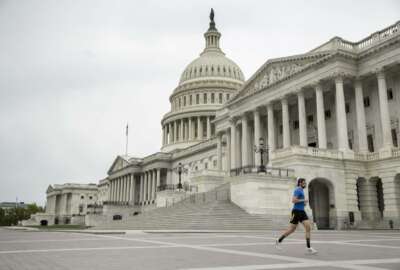Engineers, tasked with making something better, faster and cheaper, typically answer, “Pick any two.”
The Small Business Administration was given a similarly impossible task by Congress, when lawmakers appropriated, and President Donald Trump signed into law, two tranches of money to loan businesses. The first came in late March from the CARES Act, and it gave SBA $349 billion for guaranteed loans. Then came the April 24 “enhancement” bill with another $310 billion.
By last week, SBA had loaned most of the first tranche, and about half of the second. We’re talking big numbers: 4.1 million approved loans, and $525.8 billion.
So how’d they do? Cheap and fast, anyway.
Friday the SBA Inspector General Hannibal “Mike” Ware came out with a report requested by three Democratic senators: Chuck Schumer (N.Y.), Ben Cardin (Md.) and Sherrod Brown (Ohio). The report found that seven “interim final rules” — a slightly incomprehensible term at its face — “mostly aligned with the Act.” The rules were accompanied by sets of frequently-asked questions. This guidance was for borrowers and for the lending institutions through which SBA money flows.
Ware found that SBA fell short of full alignment with the act in giving priority to that Congress decided were underserved and rural markets. The former meaning entities owned by veterans, minorities, women, or organizations less than two years old. I say entities because loans are also available for nonprofits and certain individuals. The IG said it found no “evidence that SBA issued guidance to lenders to prioritize the markets indicated by the Act.”
Another flaw in SBA’s administration of these billions had to do with loan proceeds eligible for forgiveness. Here’s where it gets interesting. Congress listed as allowable uses for the loan money as payroll, interest on mortgages and other debts, rent, and utilities. Congress did not, however, specify what portion of the pie each of these slices had to represent. SBA, in conjunction with the Treasury Department, somehow determined that for a loan to be forgivable the receiving entity would have to use 75% of it for payroll. The IG report implies this was an arbitrary number.
The IG found other issues concerning collection of demographic information, timeliness of deferment process guidance to lenders, and loan registration using taxpayer identification numbers. It issued a short list of suggested actions for SBA. Among them: “Evaluate the potential negative impact to borrowers regarding the specified percentage of loan proceeds eligible for forgiveness and update the requirements, as deemed necessary.”
We don’t know SBA’s reaction. Unlike IG reports generally, this one did not include the agency’s response. The IG office called it a “flash report.”
I’m not dumping on SBA here. It really had no choice but to rush into a program — a massive program that dwarfed what the agency would have otherwise done — within days of passage. Imagine if Administrator Jovita Carranza had announced, “We’ll be issuing proposed rules in 30 days, and after a 90-day comment period, we’ll have final rules 60 days after that. Then we’ll start taking loan applications.”
Try reading Section 2201 of the CARES Act and decide whether you could come up with cogent rules within a year, much less two weeks. It puts you in awe of the congressional staff that crank out this stuff. I doubt Chuck Schumer read it, either. Anyhow, the enactment of the CARES Act specifically rescinded an earlier express loan program rule, so the agency had to do something immediately.
But the larger issue is SBA understood that Congress didn’t mean for the loans to start flowing in three or six months, long after many business would have gone under.
But what about that 75% for payroll rule? I can imagine that for many small businesses, their rent and utilities could cost more per week than their payroll. But if the landlord shuts them down, the people are out of work anyway. The IG doesn’t comment on the effects of the 75% rule, only that nothing in the law specified it.
In retrospect, 75% seems completely arbitrary. Many small businesses, mass media being what it is, concluded they’d have to spend all their loan money on payroll. Or that they’d have to retain every employee. Add to that the crashed web sites of banks and the general scrambling to understand a program spewing out interim rule after interim rule — well no wonder the crush of the first tranche has given way to a sort of halt in loan applications halfway through the second.
But then, the entire amount of the appropriations was arbitrary.
For the government, the situation shows what can happen when Congress does its typical leave-it-to-the-bureaucracy to figure it out. Only this time the bureaucracy has no time to figure it out under normal rule making. Maybe consultation with the public first might have come up with something better than the 75% rule.
It’s debatable how much specificity Congress should put into sweeping laws, just as it’s debatable how much discretion the civil service working with political appointees ought to have. This debate goes back as long as the Republic.
Over the decades the regulatory framework has mostly worked — roughly and often mistakenly to be sure — for the economic wealth producers who must live within rules. But — and for good reason — it’s not machinery designed for speed.
Copyright
© 2024 Federal News Network. All rights reserved. This website is not intended for users located within the European Economic Area.
